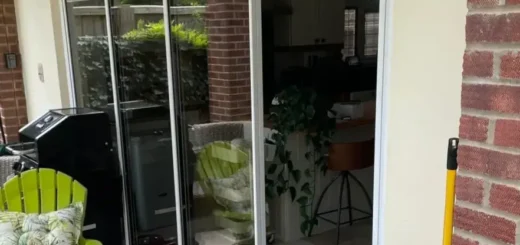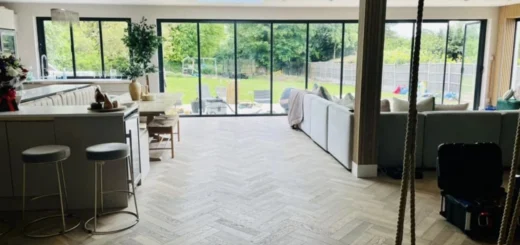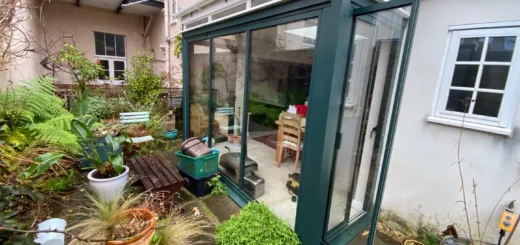Green Patio Doors: Light, Colour & Garden Tips
Table of Contents
The Rise of Green Patio Doors in British Homes
British homeowners increasingly choose green patio doors as the centrepiece of their living spaces, marking a shift away from traditional white and grey finishes.
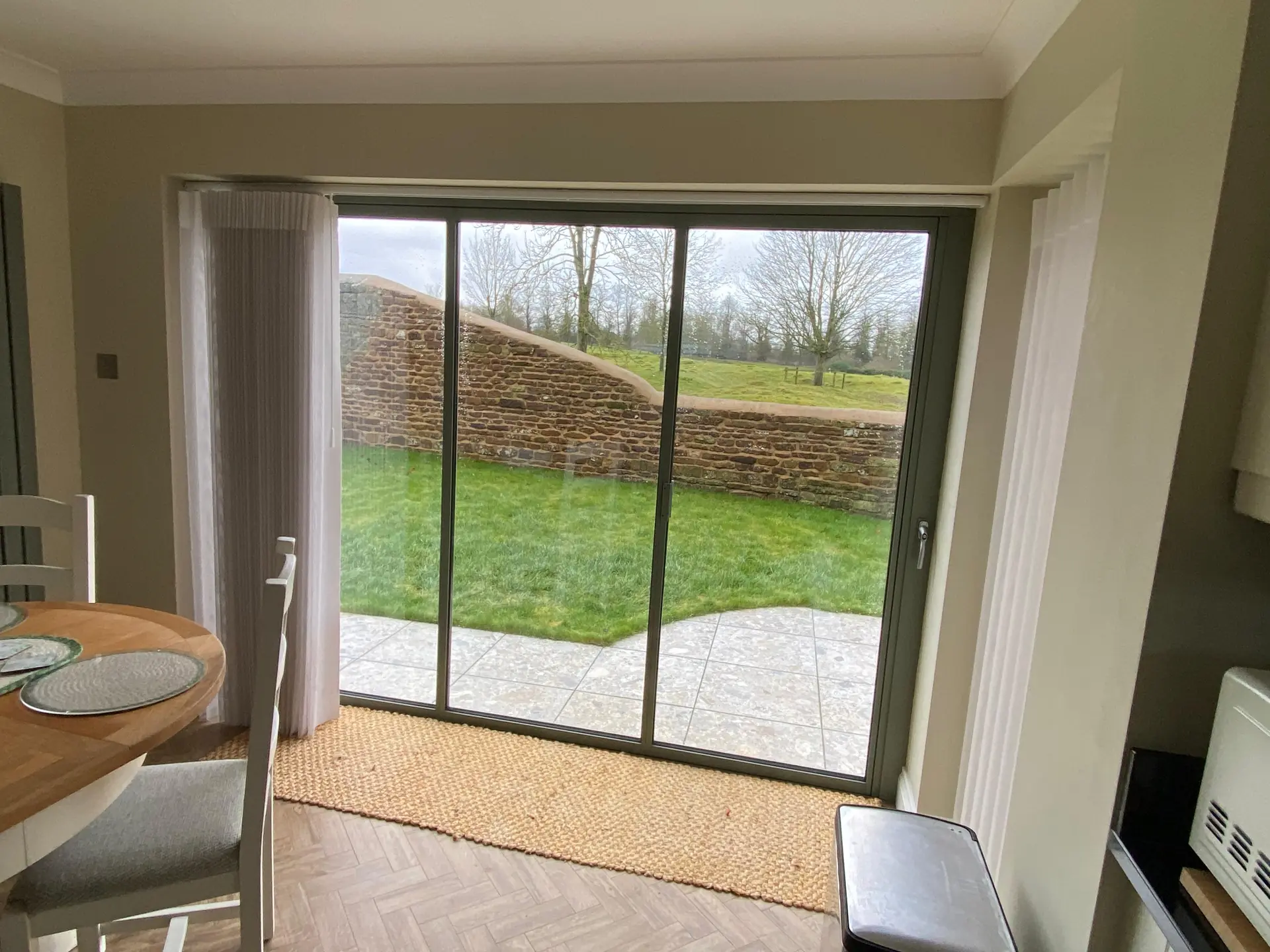
Why Green is Taking Over Home Design
Nature-inspired colours have surged in popularity across British homes, with powder coated aluminium doors in deep forest and sage shades leading this movement. Paint manufacturers report unprecedented demand for green finishes, particularly among homeowners seeking to blur the boundaries between their gardens and living spaces. Leading British designers note that green patio doors help create a lasting impression without overwhelming the eye, unlike bolder colours that might quickly fall out of favour.
Green sliding doors work particularly well in spaces where natural light streams through large glass panels, as sunlight brings out subtle variations in the paint’s undertones. The shade can appear differently throughout the day, shifting from vibrant to muted as the light changes. Darker greens absorb more light, while lighter sage and olive tones reflect it, making them popular choices for north-facing rooms.
Green Patio Doors in Different Architectural Styles
Victorian and Edwardian homes benefit from rich, heritage green patio doors that complement original features while adding a modern touch. Contemporary properties often suit sleek designs in muted sage or olive tones, working harmoniously with minimalist architecture. Period properties look stunning with deeper green patio doors that mirror traditional paint colours, particularly when paired with brass or chrome hardware.
From Country Cottages to Urban Flats
Rural homeowners often opt for green patio doors in natural, earthy tones that mirror the surrounding landscape. City dwellers tend towards bolder statements, choosing striking emerald or forest green shades that stand out against urban backdrops. Coastal properties benefit from softer, sea-inspired greens that echo the surrounding maritime environment.
Regional Colour Trends
Northern regions show a preference for darker green patio doors that capture and retain warmth, while southern counties gravitate towards lighter, cooler shades. Scottish homeowners particularly favour deep forest greens that complement traditional building materials like granite and sandstone. London’s design-conscious homeowners increasingly choose bold chartreuse and sage options that make strong style statements in period conversions and modern builds alike.
Choosing Your Shade of Green Patio Doors
Selecting the right shade requires careful thought about your home’s style, light levels, and existing colour scheme.
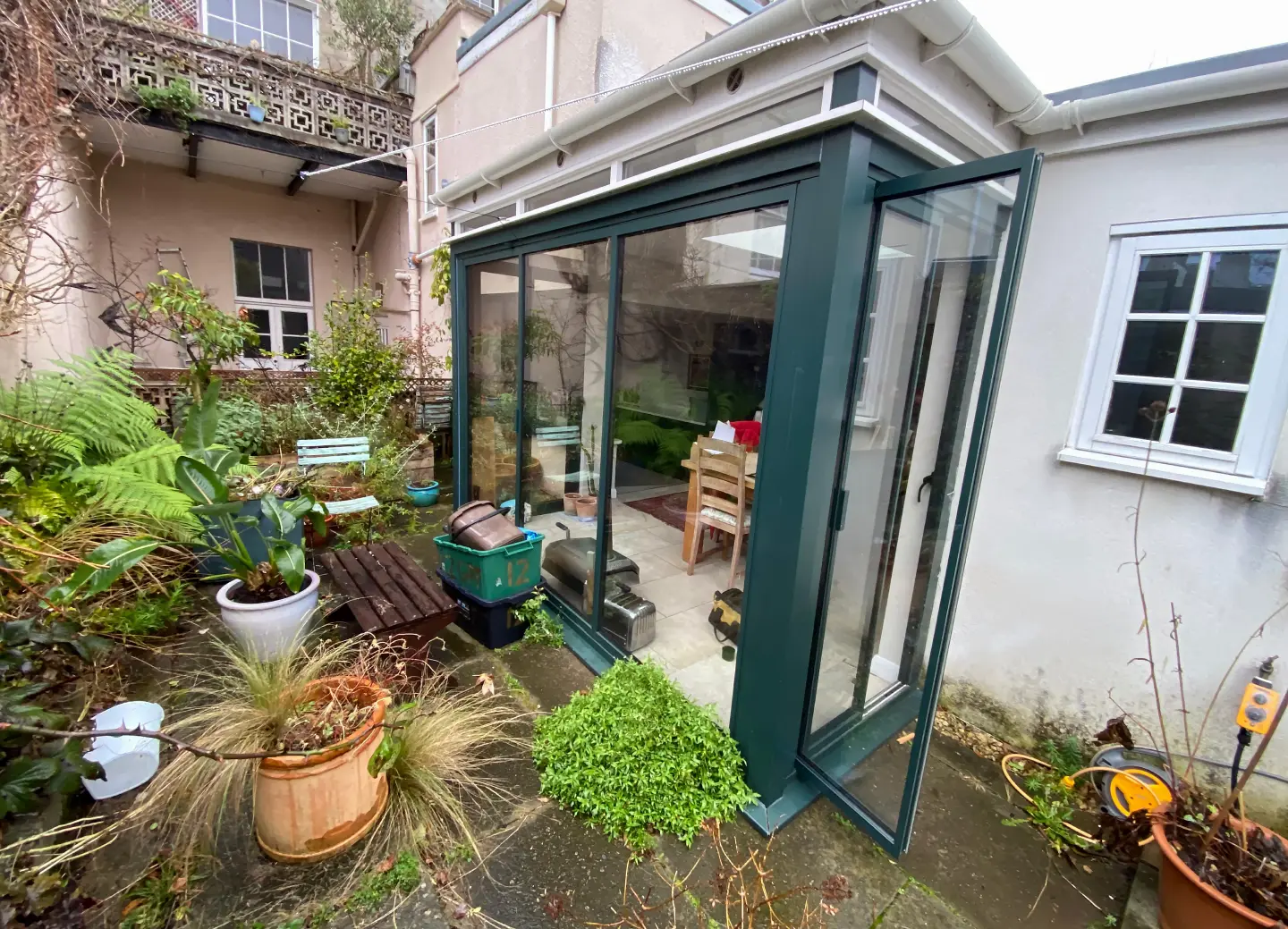
Light vs Dark Green Doors
Deep forest and emerald green patio doors create striking focal points, drawing the eye through the room and into the garden beyond. These rich colours work particularly well in spaces with abundant natural light, where their depth can be fully appreciated.
Darker shades absorb more sunlight, which means they might reduce heat gain during summer months – a benefit for south-facing rooms that tend to overheat.
Lighter shades like sage, mint, and olive bring a softer touch to living spaces. Green sliding doors in these gentle tones suit homes where subtlety is key, or where the garden views should take centre stage rather than the doors themselves. Pale greens reflect more light into the room, making them ideal for smaller spaces or areas where maintaining brightness is important.
Sunlight and Orientation Impact
North-facing rooms pose unique challenges when choosing green exterior sliding doors. Morning and evening light casts different shadows, changing how the colour appears throughout the day. South-facing installations allow the true vibrancy of green patio doors to shine, but strong sunlight might wash out paler shades.
Eastern exposures bathe green patio doors in bright morning light, while western aspects create warm afternoon glows that bring out yellow undertones in some green shades. Testing paint samples at different times of day reveals how your chosen colour might change with the light.
Seasonal Light Changes
Winter’s low sun angles create longer shadows, which can make darker green tones appear almost black. Summer sunshine brings out the vibrancy in all shades, particularly in sliding back doors that face south or west. Spring and autumn light tends to be softer, allowing subtle undertones to emerge.
Colour Matching with Existing Features
Paint chemistry plays a big part in how green tones interact with surrounding materials. Cool-toned greens complement grey stone and slate, while warmer olive shades work beautifully with red brick or sandstone. Window frames should harmonise with your green patio doors – white frames create crisp contrasts, while black frames offer contemporary sophistication.
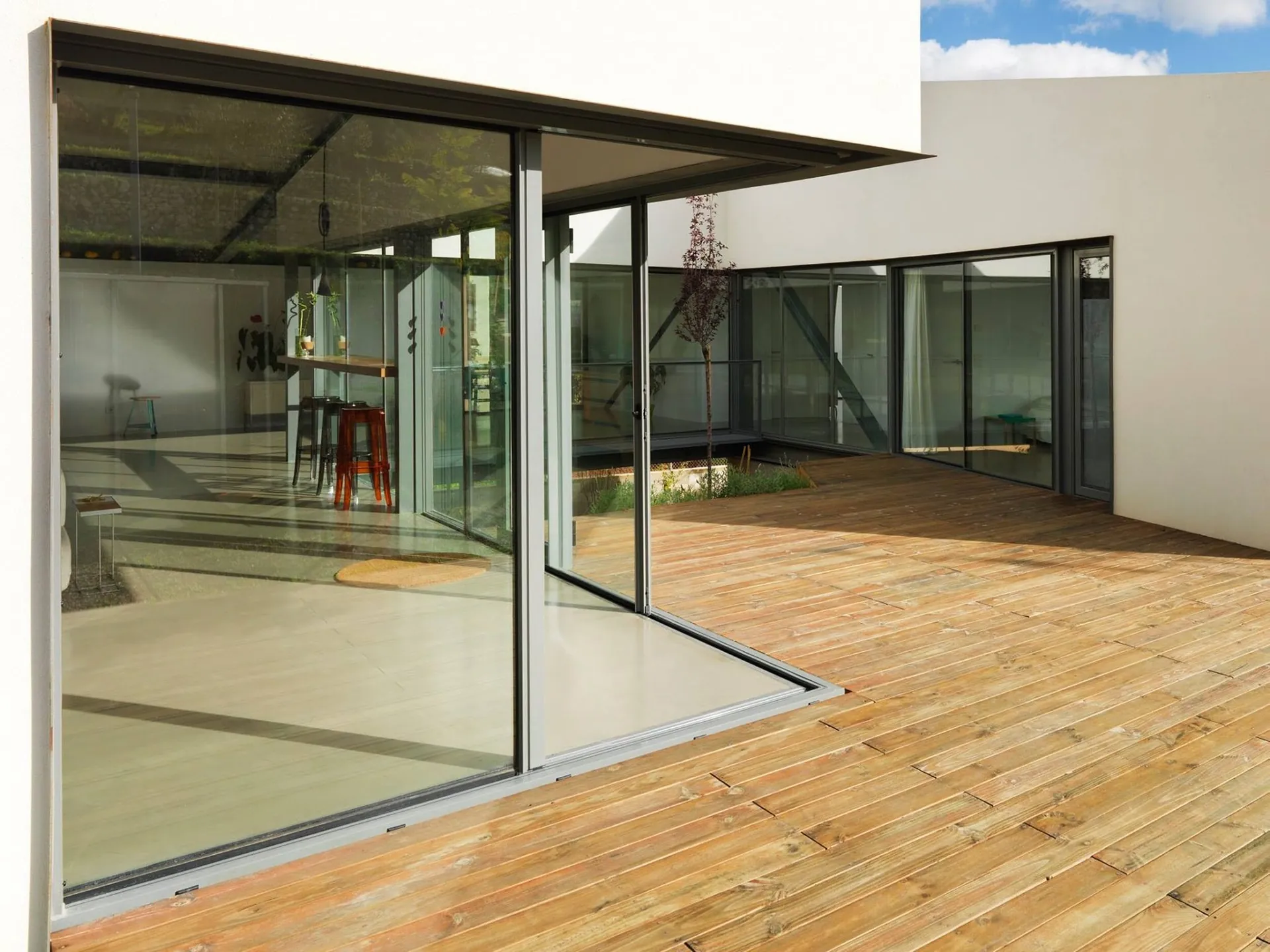
Wall colours near green patio doors need careful planning. Deep blues and greys provide sophisticated backdrops, while warm creams and off-whites let the green become a striking feature. Bold contrasts with burgundy or plum can create stand-out effects, especially in period properties where rich colour schemes are traditional.
Flooring materials influence how green appears in a space. Natural wood tones, particularly oak and walnut, provide warm foundations that balance cooler green shades. Stone flooring in grey or cream offers neutral backgrounds that let green patio doors become focal points without competition.
Hardware finishes should complement rather than compete with your chosen green. Brushed brass brings warmth to cooler greens, while chrome and stainless steel hardware suits most shades but particularly shines against deeper forest tones. Black ironmongery creates striking contrasts with lighter sage or olive doors.
Balancing Multiple Green Tones
Mixing different green shades requires careful planning. When using multiple green elements, establish a clear hierarchy – perhaps darker green patio doors with lighter green soft furnishings, or vice versa. Garden views become part of your colour scheme, so think about how interior greens will sit alongside the natural greens visible through the glass.
Textiles near green patio doors can tie the whole scheme together. Botanical prints incorporating similar green shades create cohesive looks, while contrasting patterns in complementary colours add visual interest. Natural materials like linen and cotton often work better than synthetic fabrics, as they reflect light in ways that complement painted surfaces.
Green Patio Doors in Different Home Styles
Modern homes demand different approaches to colour and design than period properties or rural retreats.
Modern Minimalist Homes
Sleek modern glass doors painted in sage or olive provide subtle sophistication without overwhelming clean-lined spaces. Minimalist interiors benefit from muted green tones that add character while maintaining visual calm. Paint finishes in matt or semi-matt work better than gloss in contemporary settings, as they reduce glare and create softer reflections.
Furniture placement near green sliding doors requires careful thought in minimalist spaces. Low-profile seating arranged parallel to the doors maintains clear sight lines, while sculptural pieces placed perpendiculars create interesting shadows as light moves through the space. Natural materials like concrete, steel, and timber provide textural contrasts without competing for attention.
Glass walls and large windows common in modern homes mean green patio doors must work as part of a broader glazing scheme. Matching frame colours across all glazed elements creates visual consistency, while contrasting frames can define different zones within open-plan layouts. Handle designs should echo other architectural hardware throughout the space – slim, linear styles often work best.
Coastal and Countryside Properties
Rural homes suit green patio doors in deeper, nature-inspired shades that mirror surrounding foliage. Country cottages often pair well with heritage greens, especially when matched with traditional brass hardware and wooden frames. Gardens visible through the glass become part of the interior colour scheme, so choosing greens that complement local plant life helps create coherent views.
Seaside properties face unique challenges from salt air and strong sunlight. Paint specifications matter more here than inland – marine-grade finishes resist corrosion while maintaining their colour. Coastal light can wash out some greens, so testing samples under bright conditions helps avoid disappointment. Lighter, aqua-tinged greens often work particularly well in maritime settings.
Material Selection for Coastal Areas
Paint adhesion varies between different door materials in coastal environments. Powder-coated finishes typically last longer than wet-sprayed alternatives, particularly when exposed to salt spray. Frame materials need similar attention – aluminium with appropriate pre-treatment generally outperforms other options near the sea.
Mid-century Modern Inspiration
Original mid-century homes often featured bold colour choices, and green patio doors can recreate this authentic period feel. Olive and forest greens popular in the 1950s and 60s work particularly well with teak furniture and brass details typical of the era. Geometric patterns in upholstery and rugs can echo mid-century designs while complementing chosen door colours.
Wall treatments around mid-century style doors should stay simple – plain painted surfaces in neutral tones let the doors become proper focal points. Wood panelling popular during this period pairs beautifully with green doors, particularly when the timber has warm undertones. Light fittings should match the era too – angular brass or copper pieces complement green while maintaining period authenticity.
Internal flow patterns common in mid-century architecture often positioned patio doors to create specific views or lead the eye through spaces. Furniture placement should respect these intended sight lines while creating comfortable seating areas. Period-appropriate materials like terrazzo flooring or cork tiles can add authentic touches without competing with the doors themselves.
Urban Contemporary Design
City homes demand different approaches to door colour than suburban or rural properties. Deeper greens work well against brick and concrete common in urban settings, while providing visual links to pocket gardens or roof terraces. Industrial-style interiors benefit from rich forest or emerald shades that add warmth to otherwise stark spaces.
Modern apartment buildings often mix materials like steel, glass, and concrete. Green door finishes need to work with these elements while standing up to heavy use common in multi-occupancy buildings. Paint durability becomes particularly important in urban settings where replacement or repainting might prove difficult.
Garden Design Around Green Patio Doors
Gardens seen through glass become living artwork, so designing outdoor spaces that work with your door colour creates striking views year-round.
Plants and Landscaping
Planting schemes near green patio doors should change through the seasons. Spring bulbs in complementary purples and whites create stunning contrasts, while summer perennials in deeper pinks and blues build layers of interest. Evergreen structural plants provide year-round frames for painted door frames, with box balls and yew pyramids offering strong shapes that look good even in winter.
Climbing plants need careful selection when growing near green sliding doors. Pergolas and trellises placed away from the doors allow vigorous climbers like wisteria or climbing roses to flourish without damaging paintwork. Trained fruit trees on walls beside the doors bring seasonal changes – from blossom to fruit – while staying manageable.
Ground-level planting immediately outside tall sliding doors requires different treatment than borders further away. Low-growing herbs and ornamental grasses move beautifully in breezes without blocking views. Plants with silver or burgundy foliage create striking contrasts against green painted surfaces, particularly when lit by evening sun.
Winter structure becomes vital when deciduous plants die back. Ornamental grasses left standing catch frost and early morning light, while skeletal seed heads provide food for birds. Strategic placement of winter-flowering shrubs like witch hazel or mahonia brings colour to darker months.

Outdoor Materials and Finishes
Paving materials near aluminium frame doors should complement rather than compete with the chosen green.
Natural stone in grey or buff tones provides neutral groundwork, while darker slate can ground lighter green shades.
Textured surfaces add interest without overwhelming the eye, particularly important when viewing the space through glass.
Timber decking weathers to soft greys that work well with painted surfaces. Hardwoods like oak or ipe maintain their structure longer than softwoods, important for high-traffic areas by patio doors. Composite materials offer durability with minimal maintenance, though colour selection becomes essential – warm browns often work better than grey tones against green doors.
Garden furniture placed near green patio doors becomes part of the view from inside. Natural materials like teak or rattan age gracefully while providing comfortable seating. Metal furniture powder-coated in contrasting colours can create deliberate focal points, drawing the eye through the glass to specific garden areas.
Lighting and Atmosphere
Evening lighting transforms views through glass. Uplighting specimen plants casts interesting shadows while creating depth in the garden. Path lights guide the eye through darker areas, particularly useful when entertaining extends into evening hours. Wall-mounted fittings beside doors should shine down rather than across to avoid glare on glass panels.
Solar-powered lights offer flexible lighting options without complex wiring. Stake lights among plants create pools of gentle illumination, while stronger LED spots can highlight specific features. Colour-changing systems need careful use – warm white light generally works better than coloured options near painted surfaces.
Water features visible through green patio doors add movement and sound to garden scenes. Simple bubble fountains provide gentle background noise while remaining visually subtle. Reflecting pools mirror sky and surrounding plants, particularly striking when viewed through large glass panels in changing light conditions.
Privacy and Screening
Strategic plant placement ensures privacy without blocking light. Pleached trees create high-level screens while keeping lower views open. Bamboo provides quick-growing natural screens that rustle pleasantly in breeze – black or golden varieties offer particularly striking contrasts against green painted finishes.
Architectural screens can divide spaces while maintaining light flow. Slatted panels painted to match or contrast with doors create interesting shadow patterns throughout the day. Living walls planted with shade-tolerant species bring nature closer to the house while providing natural screening from neighbours.
Garden structures like pergolas frame views through doors while supporting climbing plants. Paint colours for these structures should either match door frames for cohesion or provide deliberate contrasts. Position determines their impact – placing them away from doors creates views through layers of planting and hard landscaping.
About SunSeeker Doors
With over 20 years of experience, SunSeeker Doors remains at the forefront of door design with our quality-tested patio doors and related products, including the bespoke UltraSlim aluminium slide and pivot door system, Frameless Glass Doors, and Slimline Sliding Glass Doors. All of our doors are suitable for both internal and external use.
To request a free quotation, please use our online form. You may also contact 01582 492730, or email info@sunseekerdoors.co.uk if you have any questions.


